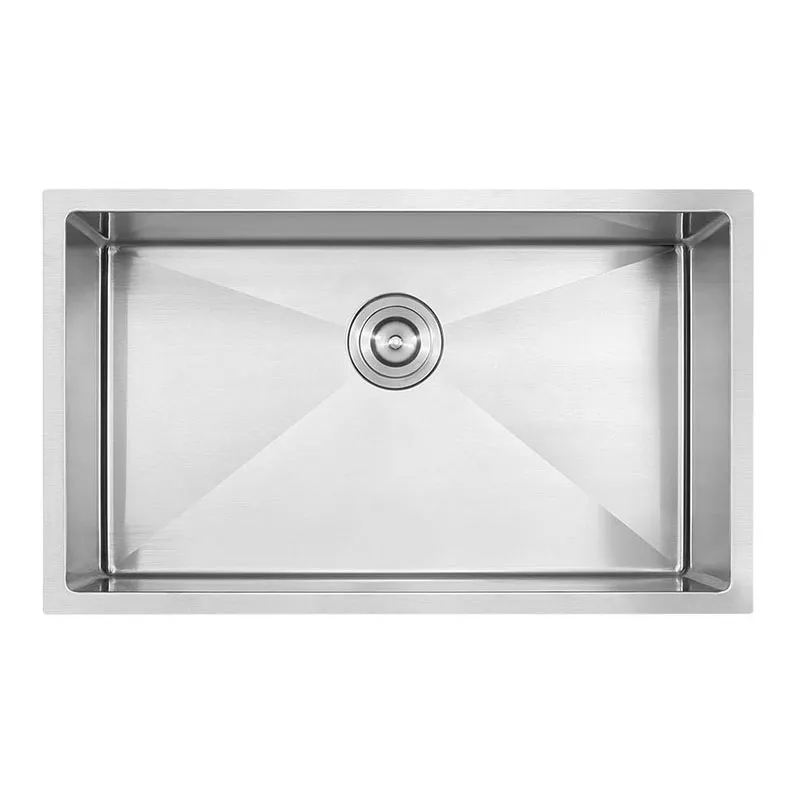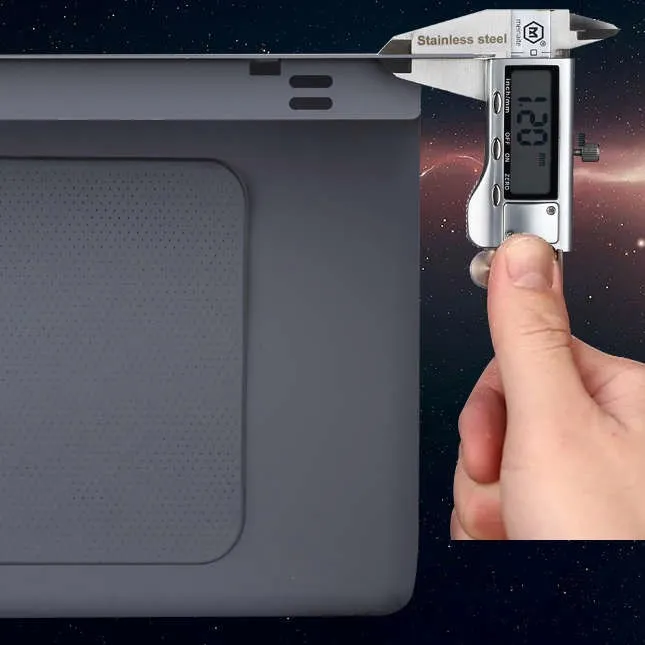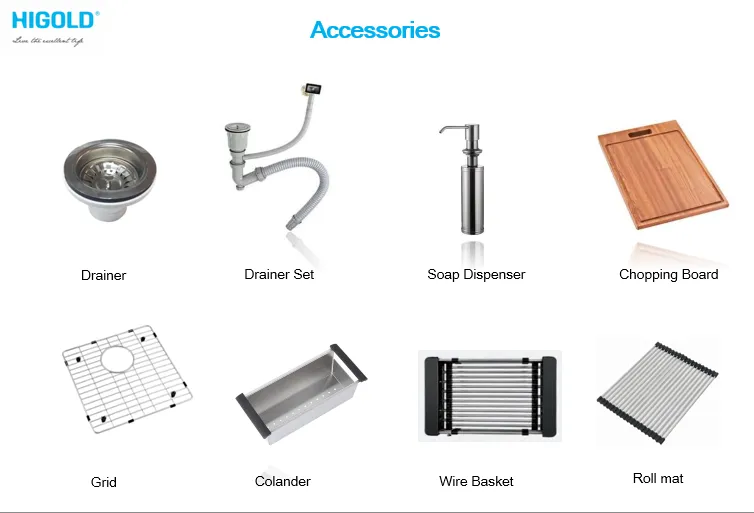Undermount kitchen sinks are widely used in contemporary kitchen designs due to their modern appearance and easy cleaning. Compared to traditional top-mount sinks, undermount sinks are installed with the rim fixed beneath the countertop, creating a seamless connection between the sink and the countertop, offering a more streamlined look and easier cleaning.
Despite their many advantages, undermount sinks may need to be replaced over time due to wear, cracking, age, or changing kitchen design needs. Accurately measuring the existing sink is a crucial step when replacing an undermount kitchen sink.
Incorrect measurements can result in the new sink not fitting properly or being installed unstably, potentially even damaging the countertop. Therefore, mastering proper measuring techniques is crucial when replacing an undermount kitchen sink.
This article will provide detailed instructions on how to accurately measure an undermount kitchen sink to ensure a perfect fit and optimal installation.

Why is Accurate Measurement Important?
Accurate measurements are crucial when replacing an undermount kitchen sink. The connection between an undermount sink and the countertop is extremely delicate, and any dimensional deviation can make installation difficult or even impossible. Unlike traditional top-mount sinks, undermount sinks require precise dimensions due to their unique installation method. Furthermore, the properties of the countertop material (such as quartz, granite, or engineered stone) may also affect sink installation requirements, so careful attention to dimensional accuracy is crucial.
Incorrect measurements can lead to the following problems:
• The sink won't fit into the designated opening.
• The sink will be unstable and prone to loosening or falling.
• Damage to the countertop, affecting its overall aesthetics and usability.
• The new sink won't connect tightly to the countertop, causing water and dirt to accumulate around it.
Therefore, accurate measurements directly impact the success of replacing an undermount kitchen sink.
Required Tools
Before you begin measuring, you'll need to gather some basic tools. Here's a list of the tools you'll need to measure your undermount kitchen sink:
• Tape measure: Used to measure the length, width, and depth of the sink opening. • Level: Used to ensure the countertop opening is level to prevent uneven sink installation.
• Steel ruler: Used to ensure accurate measurements, especially when measuring the sink depth.
• Pen and paper: Used to record measurements to avoid omissions or errors.
• Angle measuring tool: If you need to measure the angle of the countertop opening, it is recommended to prepare an angle measuring tool.
Once you have these tools ready, you can begin the actual measurement process.

How to measure an undermount kitchen sink?
1. Measure the sink opening dimensions
First, you need to measure the dimensions of the sink opening in the countertop. This dimension determines whether the new sink will fit within the existing opening. To ensure accuracy, we recommend the following steps:
• Measure the length and width of the sink opening: Use a tape measure to measure the length and width of the countertop opening. Be sure to align the measuring lines with the ends of the opening to avoid measurement deviations.
• Check the shape of the opening: If the original undermount sink opening is not a perfect rectangle or square but has some curves or other shapes, measure the length and width of each side separately. Especially for round or irregularly shaped sink openings, more careful recording of different measurements is required.
• Measuring the distance from the opening to the countertop edge: Some undermount sink designs may require a certain allowance between the sink opening and the countertop edge, which is another point to keep in mind during the measurement process. Accurately measuring the distance from the opening to all four edges of the countertop will help determine the correct placement of the new sink.
2. Measuring the sink's depth
The depth of an undermount kitchen sink is another critical dimension. Generally speaking, the sink's depth affects its connection to the countertop and its functionality. Therefore, it's important to pay attention to the following points when measuring:
• Sink depth: Use a tape measure to measure the depth of the sink, measuring the distance from the bottom of the sink to the bottom of the countertop. If the sink is deep, it's recommended to ensure that there is sufficient countertop space to accommodate the new sink. Sinks that are too deep may cause installation difficulties.
• Ensure the opening depth meets the requirements: When measuring the sink's depth, also ensure that the countertop opening is deep enough. If the hole depth is insufficient, it may affect the sink's installation or cause it to be unstable.
3. Check the Sink Installation Position
When installing an undermount kitchen sink, the correct sink position is crucial. If the sink is not positioned correctly, it may not be securely installed or the sink may not be level with the countertop, affecting both aesthetics and usability.
• Measure the Sink Installation Position: Confirm that the sink's installation position matches the overall kitchen countertop design. For ease of use, the sink's installation position should coordinate with other features such as the faucet and kitchen countertop.
• Confirm that the countertop is level: Use a level to check that the countertop is level. Even if the countertop appears flat, it may develop minor warping over time or with frequent use. An uneven countertop will cause the undermount kitchen sink to be unstable, affecting its performance.
4. Consider Other Installation Requirements
When replacing an undermount kitchen sink, in addition to accurately measuring the sink's dimensions, you should also consider the following factors:
• Countertop Material Compatibility: Different countertop materials require different sink installation methods. For example, quartz or granite countertops require more precise cutouts and stronger fixings. Therefore, when selecting a sink, ensure it matches the countertop material.
• Sink Rim Design: Sink rims come in different designs (such as squared edges or rounded edges). When replacing a sink, in addition to the dimensions, you should also consider the rim design to ensure a consistent visual effect between the sink and the countertop.

How to Ensure an Accurate Undermount Sink Installation?
After taking all the necessary measurements, the next step is to ensure a smooth installation. When installing an undermount sink, in addition to accurate dimensions, you should also consider the following:
• Choosing the Right Mounting Adhesive: When installing an undermount sink, it is crucial to use high-quality adhesive and apply it evenly to ensure a secure bond between the sink and the countertop.
• Use a specialized support frame: Undermount sinks often require a specialized support frame to provide additional support and ensure long-term stability.
• Check the sink's securement: After installation, double-check the undermount sink's securement. Use a level to check that the sink is level, and gently push and pull on the sink to ensure it's secure and not loose.

What kind of discounts are available for repeat bulk purchases?
Repeat buyers benefit from a tiered discount structure that rewards ongoing cooperation and increased order volume. Clients with regular monthly shipments or framework agreements can negotiate better pricing, improved payment terms, and priority scheduling. Highly value long-term partnerships and reflect that through cost savings and dedicated account management for loyal buyers.


